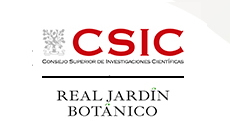Scientific Area
Abstract Detail
Nº613/1514 - The hyperdiverse conifer flora of the Baltic amber forest and its palaeoecological significance
Format: ORAL
Authors
Lutz Kunzmann1, Alexander R. Schmidt2, Eva-Maria Sadowski3
Affiliations
1 Senckenberg Naturhistorische Sammlungen Dresden, Dresden, Germany
2 Georg August University of Göttingen, Göttingen, Germany
3 Museum für Naturkunde, Leibniz Institute for Evolution and Biodiversity Science, Berlin, Germany
Abstract
Late Eocene Baltic amber constitutes the largest amber deposit on Earth and one of the most important Cenozoic fossil lagersttten worldwide, however, the picture of vegetation and habitat diversity of its source area has been very fragmentary. Notions concerning the Baltic amber flora were mainly based on palaeobotanical data published in the 19th century and the early 20th century, and conclusions concerning habitat types and palaeoclimate were predominantly drawn from the ecology of closest living extant relatives of fossil animals from Baltic amber.Here, we summarize our revision of historic monographic treatments and investigation of conifer inclusions from historic and newly discovered amber specimens, and show that theconifer flora of the source area of Baltic amber was hyperdiverse.Our study revealed five families, 17 genera and 26 fossil-species of conifers, including eight genera and 14 fossil-species of Cupressaceae (Calocedrus, aff. Glyptostrobus, Cryptomeria, Cupressinanthus,Cupressinocladus,Quasisequoia,Sequoia, Taxodium); six genera and nine fossil-species of Pinaceae (Abies, Cathaya, Nothotsuga, Pinus, Pseudolarix, aff.Tsuga), and one fossil-species each of the families Geinitziaceae (Cupressospermum), Cephalotaxaceae (Cephalotaxus), and Sciadopityaceae (Sciadopitys). Our data show that the Baltic amber conifer flora is unique and clearly distinct from both central European paratropical or subtropical floras and polar cool-temperate floras of the Eocene. Instead, assemblages from Neogene coastal lowland vegetation of mid-latitudinal Europe exhibit a similar conifer composition. Evaluation of the autecology of individual fossil-species unraveled a heterogeneous vegetation with a mosaic of forests and open habitats in alluvial plains, coastal swamps and mesic hinterland. Our data challenge previous notions that Baltic amber derives from tropical or ‘subtropical’ forests. Compilation of all currently available botanical data implicates a warm-temperate and humid palaeoclimate in the source area.




